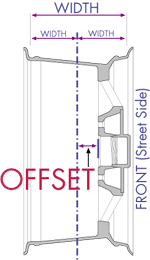Ultra basic question. I run a 2000 4x4 Chevy Silverado 1500 Z71. It's got stock wheels, no lift. The tires are 265/75R16. I've taken it onto forest service roads and the like, nothing insane, but roads where I was glad to have the 4x4.
I feel that I've started to reach my comfort level and limit on what I already have and am interested in upgrading my wheels (?) and tires. I don't have any interest in rock crawling, but I would like to get something that is going to give me room to grow a bit into more serious trails.
I am looking at General Grabber ATX or Falken Wildpeak A/T3W for tires. What I don't really understand is how I figure out what sort of wheel I should get. I understand, given my stock rig, I don't want to put something on that is so large it's going to create rubbing in the wheel well with turns or require me to cut out fender flares.
Does anyone have a recommendation regarding wheels, and when I'm looking at wheels for overlanding, what I actually need to keep in mind when I'm venturing into actually changing from stock wheels to something else? (Just as a for example, at the moment I have so many things I'm trying to figure out that I don't even know if it's important--aluminum vs steel both for weight considerations and durability, how much regarding size is either too little or too much, does pcd matter and why, etc).
Basically, is there an in depth article or primer on wheels and overlanding in a full size truck?
I feel that I've started to reach my comfort level and limit on what I already have and am interested in upgrading my wheels (?) and tires. I don't have any interest in rock crawling, but I would like to get something that is going to give me room to grow a bit into more serious trails.
I am looking at General Grabber ATX or Falken Wildpeak A/T3W for tires. What I don't really understand is how I figure out what sort of wheel I should get. I understand, given my stock rig, I don't want to put something on that is so large it's going to create rubbing in the wheel well with turns or require me to cut out fender flares.
Does anyone have a recommendation regarding wheels, and when I'm looking at wheels for overlanding, what I actually need to keep in mind when I'm venturing into actually changing from stock wheels to something else? (Just as a for example, at the moment I have so many things I'm trying to figure out that I don't even know if it's important--aluminum vs steel both for weight considerations and durability, how much regarding size is either too little or too much, does pcd matter and why, etc).
Basically, is there an in depth article or primer on wheels and overlanding in a full size truck?





